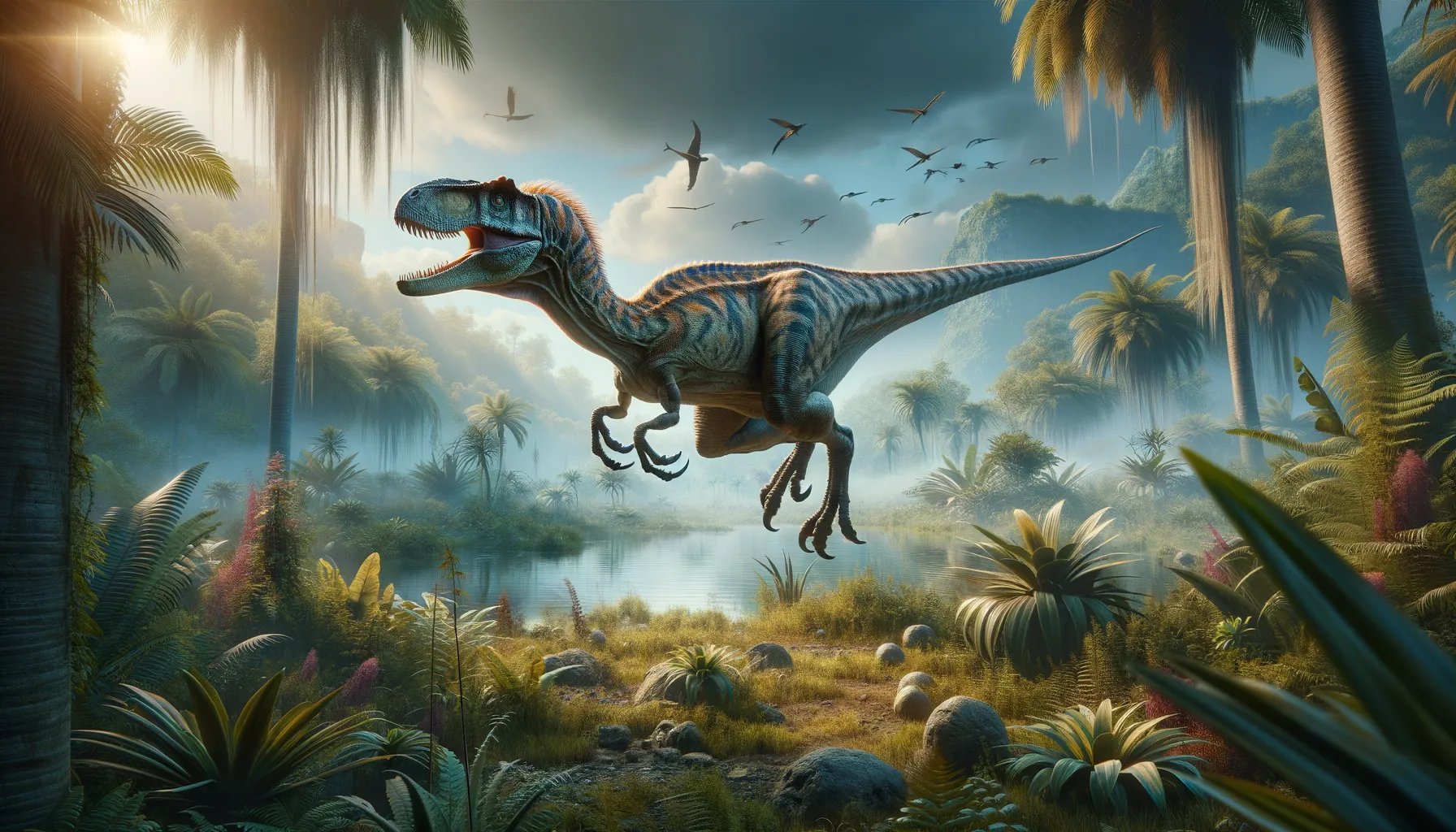
Cryptoraptor
Stealth and speed in ancient times!
Period
Cretaceous
Length
About 4 meters long.
Height
Approximately 1.5 meters tall at the hip.
Weight
Around 150 kilograms.
Cryptoraptor was a swift and agile predator from the Cretaceous period. It had strong hind legs built for running and possibly hunting smaller prey or scavenging. Its lightweight and streamlined body allowed it to navigate dense vegetation effortlessly, and its sharp, curved claws were suited for grasping. The species played a crucial role in its ecosystem, balancing prey populations and contributing to the dynamic environment of Cretaceous America.
Diet
Cryptoraptor was likely a carnivorous dinosaur, primarily feeding on smaller vertebrates and possibly insects. Its diet might have varied depending on the availability of prey, adapting to changes in its environment.
Hunting
As a potentially solitary hunter, Cryptoraptor relied on its speed and agility to pursue and capture prey. It might have used ambush tactics, taking advantage of vegetation cover before striking quickly with its claws and teeth.
Environmental challenges
Cryptoraptor faced challenges such as climate variations that affected its food sources. Seasonal changes might have influenced prey availability, requiring adaptability in its hunting strategies. Competition with other predators could have also affected its survival, leading to rivalries or the need to migrate for better resources. These challenges shaped its evolution, favoring traits like agility and adaptability.
Speed
Agile runner, with speed up to 40 km/h.
Lifespan
Estimated lifespan of 15-20 years.
First discovery
First discovered in limestone formations in Montana, 1987.
Fun Facts
- Cryptoraptor's name means 'hidden thief' because its fossils were found in hard-to-reach rocky areas.
- Unlike many dinosaurs, Cryptoraptor is known for its excellent ability to camouflage with its surroundings.
- It is believed that the Cryptoraptor was about the size of a modern-day large dog, making it smaller than many of its dinosaur relatives.
- Cryptoraptor had sharp claws and keen senses, which made it a very effective hunter in its environment.
- Its fossils were mainly discovered in regions that were once dense forests, suggesting it preferred such habitats.
- Cryptoraptor lived during the Late Cretaceous period, sharing its time with some of the iconic large dinosaurs.
- Scientists think Cryptoraptor was likely a solitary creature, hunting alone rather than in packs.
Growth and Development
Cryptoraptor grew rapidly during the early stages of its life to avoid predation. Juveniles likely depended on a high-protein diet to fuel their growth. As they matured, their hunting skills improved, allowing them to support themselves independently. Maturity might have been reached relatively quickly, ensuring survival in a competitive environment.
Habitat
Cryptoraptor inhabited diverse environments, ranging from dense forests to open plains. This adaptability allowed them to exploit various ecological niches, providing more opportunities for hunting and scavenging. They required access to adequate prey and likely migrated if resources became scarce. Their surroundings influenced not just their diet but also their social structures and interactions.
Interaction with other species
Cryptoraptor likely interacted with other species both as predator and competitor. Its agility could have been an advantage in evading larger predators while competing with similar-sized theropods for prey. Social interactions may have included occasional cooperation or conflict within and among species, influencing dynamics within their ecosystem.
Natural lifespan
In its natural habitat, Cryptoraptor's lifespan was around 15-20 years.
Reproduction
Cryptoraptor likely had a reproductive cycle involving the laying of eggs, like other theropods. Nesting sites were possibly chosen for their safety and proximity to resources, ensuring offspring had a better chance of survival. Parental care, if present, would have boosted hatchling survival rates by providing protection and initial sustenance.
Social behaviour
Cryptoraptor's social behavior was possibly influenced by environmental pressures like prey availability and predator threats. It may have exhibited solitary or loosely social habits, coming together for breeding or hunting if advantageous. Territoriality could have affected interactions, with individuals defending or competing for resources.
Fossil locations
Fossils of Cryptoraptor have primarily been found in the limestone formations of Montana, offering insight into its distribution. These remains have helped reconstruct its ecological role in the Cretaceous period. Ongoing discoveries could expand known locations, further illuminating its habitat preferences.
